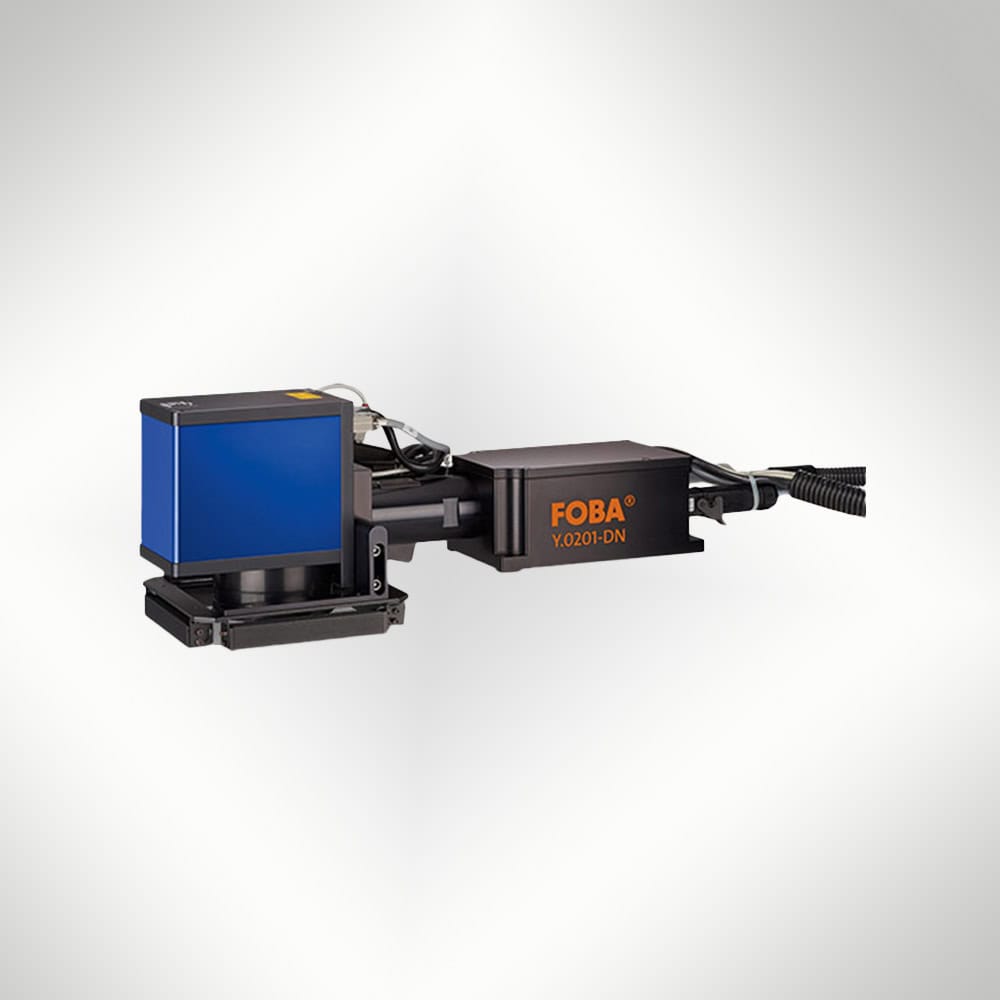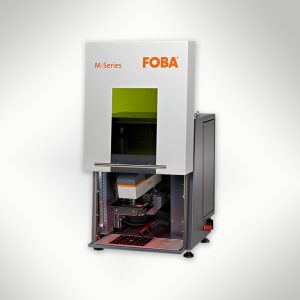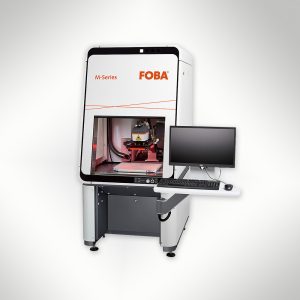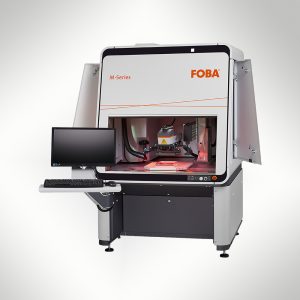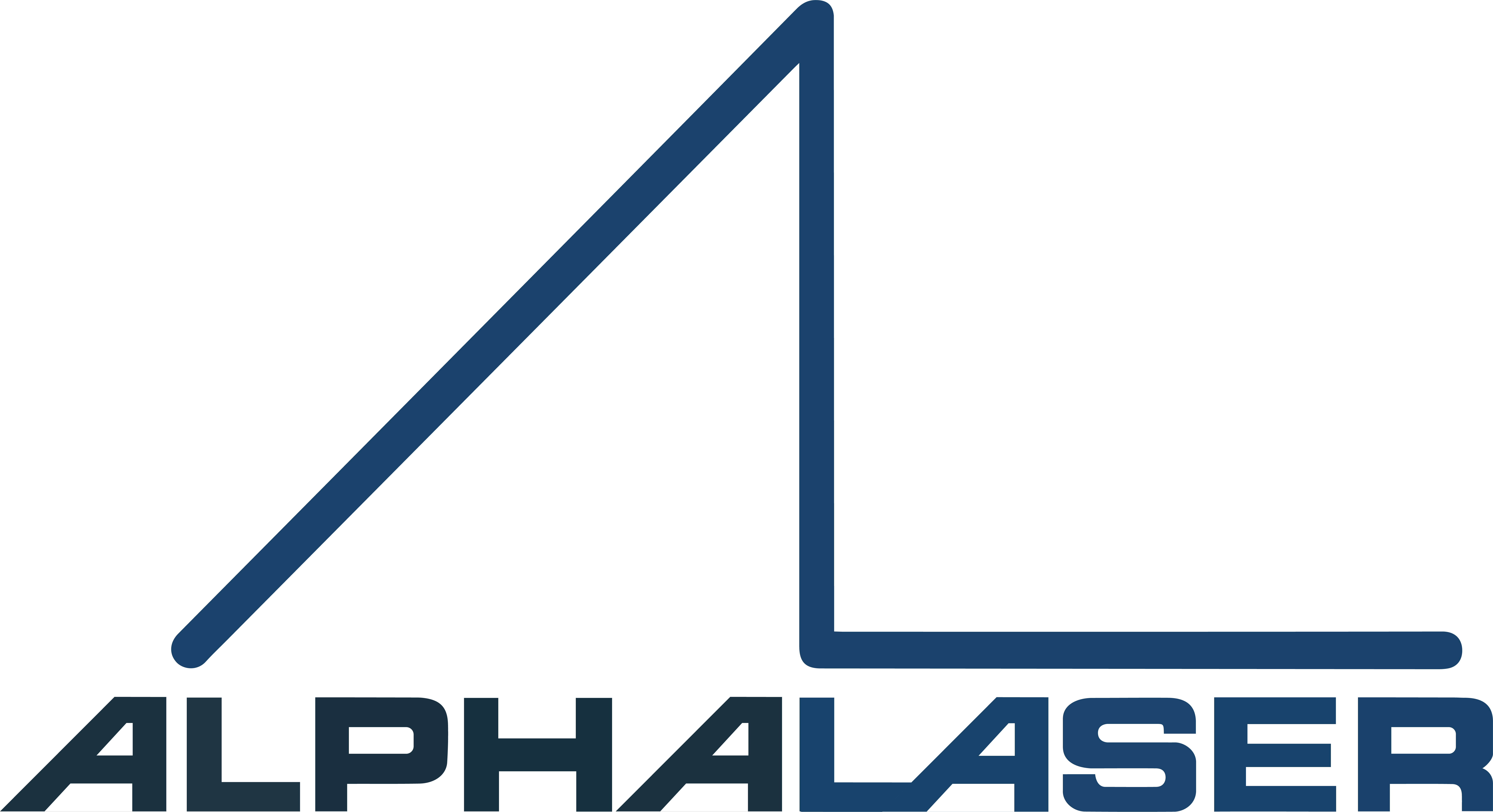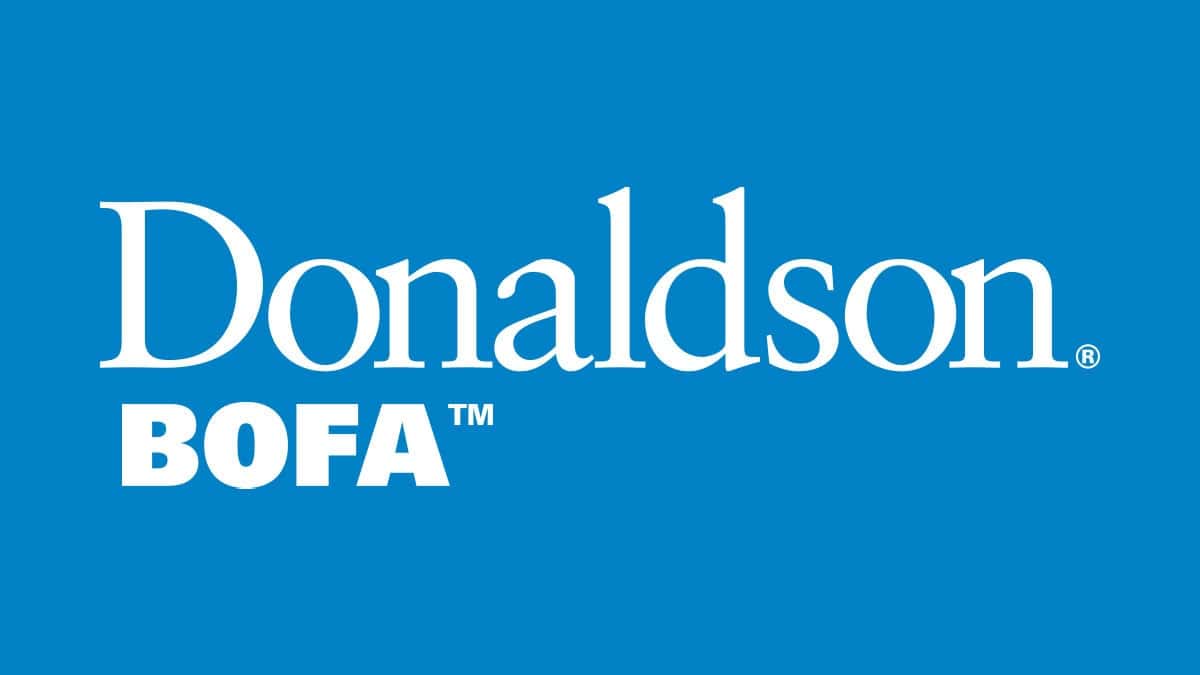Laser Systems
Y.0201 DN

The FOBA Y.0201-DN is a high-precision fibre laser marking system designed for day & night design paint removal. Engineered for fast, high-contrast marking on coated surfaces, it delivers exceptional speed, accuracy, and minimal scrap for automotive dashboards, buttons, and backlit components.
Laser Type
The FOBA Y.0201-DN is powered by a 20W pulsed ytterbium fibre laser with a wavelength of 1,064 nm. It features selectable pulse durations from 2 to 350 nanoseconds, allowing precise, high-contrast marking with minimal heat impact. The laser delivers up to 6,000 mm/sec marking speeds, ensuring superior results for day & night applications, including fine paint removal and backlit component production.

Laser Systems
Laser Marking & Engraving
The FOBA Y.0201-DN is a specialised fibre laser marking system designed for high-speed, high-precision day & night design applications, including paint removal on backlit dashboards, buttons, and control panels. With a 20W pulsed ytterbium fibre laser and multiple selectable pulse durations, it ensures optimal contrast on multi-layer coatings, achieving up to 50% faster process times compared to conventional solutions. The integrated vision system reduces scrap by up to 80% through precise mark alignment and verification. Designed for both stand alone use with FOBA’s M-Series workstations and integration into production lines, the Y.0201-DN ensures long-term reliability with air-cooled, maintenance-free operation and an extended laser source lifespan. Its advanced beam quality guarantees sharp, clear results for demanding automotive and consumer electronics applications.
Send a Product Request
Product Form
Contact form for product pages
"*" indicates required fields
Laser Cleaning
Related Laser Cleaning Systems
Answering Your Questions
Frequently Asked Questions
Both laser marking and wafer sorting are integral to maintaining high-quality standards in semiconductor production. Laser marking provides permanent identification of each component, enabling traceability and facilitating the tracking of products throughout their lifecycle. Wafer sorting ensures that only functional dies advance to the packaging stage, effectively filtering out defective units early in the process. Together, these processes help minimise errors, reduce waste, and ensure that only components meeting strict quality criteria reach the market.
Wafer sorting, also known as wafer testing, is a process performed during semiconductor fabrication where each die (individual chip) on a silicon wafer is electrically tested for functionality. The primary purpose of wafer sorting is to identify non-functional or defective dies before they proceed to packaging, thereby preventing the assembly of faulty components. This step is crucial for enhancing overall yield, reducing manufacturing costs, and ensuring the reliability of semiconductor devices.
Laser marking is a process that uses focused laser beams to create precise, permanent marks on materials. In the semiconductor industry, this technique is essential for inscribing critical information onto wafers. The high precision of laser marking ensures that even microscopic marks are clear and readable, facilitating effective traceability and quality control throughout the manufacturing process.
The AL3D-METAL 200 is particularly suited for industries requiring high precision and intricate designs, such as precision mechanics, medical technology, dental, and jewellery sectors, as well as research and development laboratories. Its ability to produce complex geometries with fine detail makes it ideal for creating customised components, prototypes, and small series productions. The printer’s efficient material usage and safe powder handling are advantageous when working with high-value materials, making it a valuable tool for producing high-quality metal parts across various applications.
The AL3D-METAL 200 features a closed powder circuit that prevents operator contact with metal powders during the entire printing process, enhancing workplace safety. Its intelligent cartridge system simplifies material supply, enables quick process preparation, and ensures high material utilisation, which is particularly beneficial when working with expensive or precious metals. Additionally, the system includes the AL3D-CABIN unpacking station, providing a closed process chamber for the safe separation of sintered components from residual powder and facilitating the collection and potential reuse of leftover material.
The AL3D-METAL 200 is a 3D metal printer developed by ALPHA LASER GmbH, designed for the additive manufacturing of high-precision metal components. Key features include a 200 W fibre laser with a 50 µm focus diameter, a closed powder handling system for enhanced safety, an innovative cartridge system for efficient material usage, and a compact footprint of 600 × 617 mm, making it suitable for environments with limited space. The printer supports a variety of materials, including iron alloys, nickel-based alloys, cobalt-chrome alloys, precious metals, and reactive metals.
Laser hardening is primarily applied to ferrous metals, including various steels and cast irons, that have sufficient carbon content to undergo martensitic transformation. Industries such as automotive, aerospace and mechanical engineering utilise laser hardening to enhance the wear resistance and lifespan of components like gears, camshafts, and moulds. The process is particularly advantageous for large or complex parts, as mobile laser hardening systems can treat these components in situ, reducing downtime and eliminating the need for disassembly.
Laser hardening offers several benefits compared to conventional techniques:
- Precision and Control: The laser allows for exact control over the area being hardened, enabling selective treatment of specific surfaces without affecting the entire component.
- Minimal Distortion: Due to localised heating and rapid self-quenching, there is reduced thermal distortion, preserving the component’s dimensional accuracy.
- No Need for External Quenching: The process utilises the material’s own mass to cool the heated area, eliminating the requirement for external quenching media like water or oil.
- Efficiency: Laser hardening is a fast process, often completed in seconds, leading to significant time and energy savings.
Laser hardening is a surface treatment process that uses a high-powered laser beam to heat the surface layer of a metal component to its austenitizing temperature. This rapid, localised heating is followed by self-quenching, where the surrounding material cools the heated area quickly, transforming it into martensite—a hard and wear-resistant microstructure. This method enhances the surface hardness and durability of metal parts without the need for external quenching media.
Laser Cladding can be used for metals Such as stainless steel, nickel-based alloys, cobalt-based alloys, and titanium.
Reviews
Don't Just Take Our Word for It
Our Customers

Talk to Us!
Connect with our Technical & Support Team.
